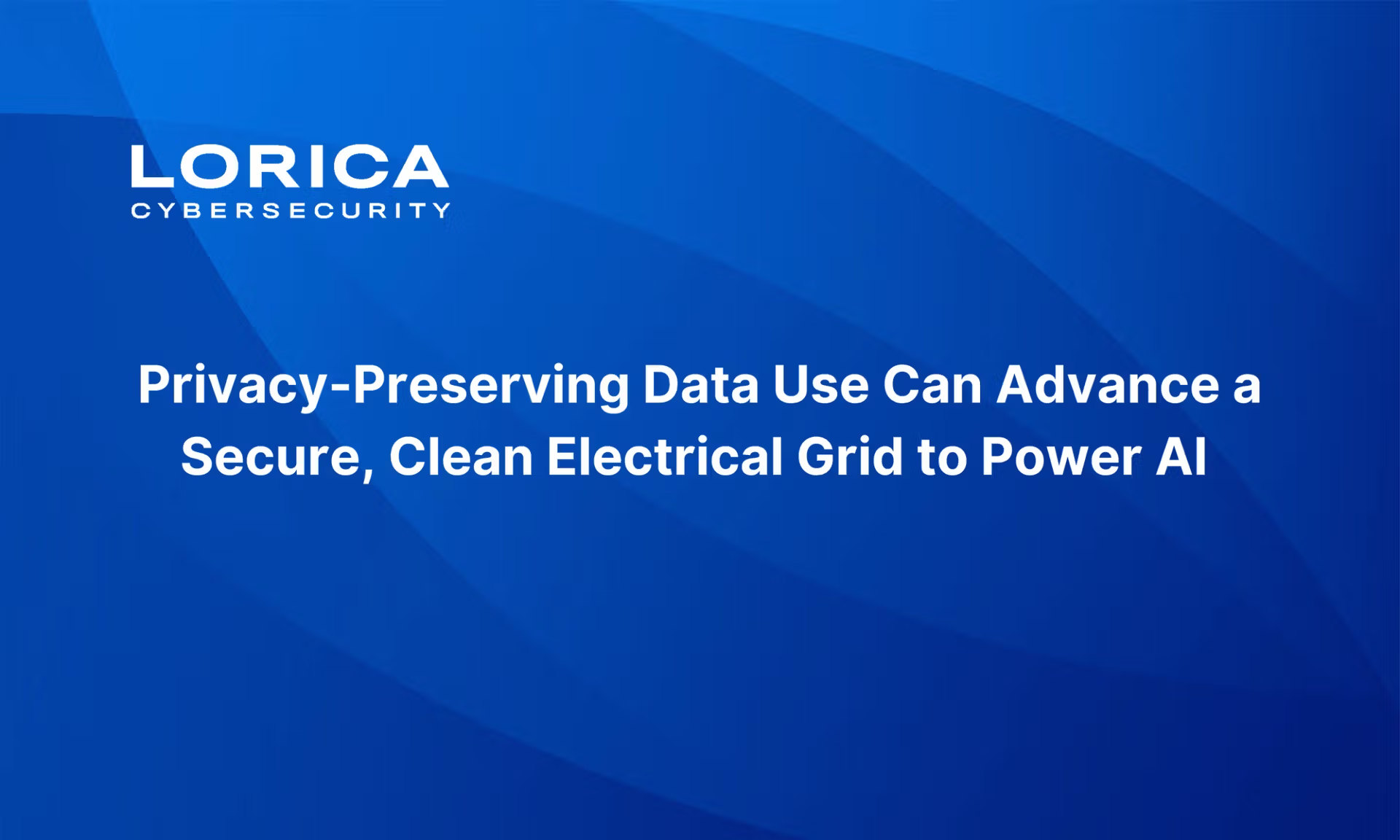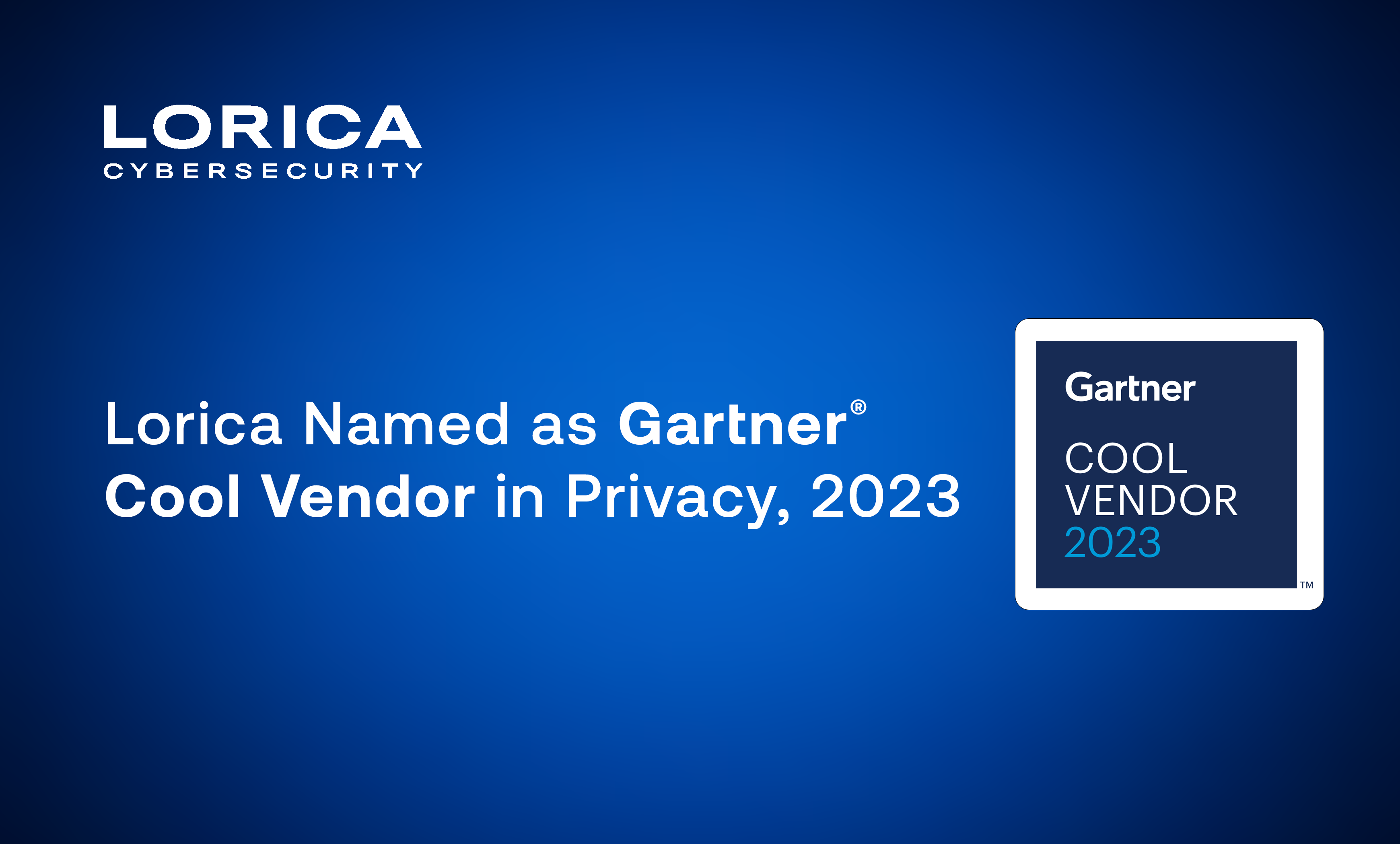Lorica insights
Privacy-Preserving Data Use Can Advance a Secure, Clean Electrical Grid to Power AI
Mar 17, 2025
The electrical grid in the U.S. faces two big challenges that coalesce around AI. Demand for electricity is rising and will continue to rise beyond what the grid can currently deliver due in part to energy-hungry AI. At the same time, the aging grid is vulnerable to cyber operatives around the world who are hunting for weaknesses in critical U.S. infrastructure. While AI is clearly part of the problem, it can also be part of the solution—if we choose to leverage AI for those purposes. In particular, by using relevant data in privacy-preserving ways, AI can support a secure, clean electrical grid.

AI is straining the electrical grid
AI is incredibly resource-intensive. The recently announced Stargate Project highlights the massive resources needed to power gen AI: promising as much as $500 billion in private sector investments to build new data centers in the U.S. Some estimate that training the gen AI model GPT-3 drained 190,000 kilowatt-hours of electricity and produced CO2 pollution more or less equivalent to driving a car to the moon and back. The resource demands for both electricity and water continue after a model’s launch. A single ChatGPT query uses about 10 times as much energy as a Google search.
Today, these energy demands are met mostly by highly polluting, fossil-fueled power plants. Both Google and Microsoft say their emissions have surged in recent years, specifically due to AI. As the value of gen AI grows alongside its use in a wide variety of sectors, these resource demands may have undesired consequences. Gen AI threatens to undermine companies’ and countries’ climate goals and commitments.
Ordinary people may soon feel the effects, too. Meeting higher electricity demand means building new power plants and transmission lines. This costs a lot of money, usually covered by all utility customers in the region—meaning higher electricity prices for everyone.
AI supports renewable energy
The U.S. electrical grid will need to expand by as much as 67% in the next decade, with demand partly driven by AI data centers. Yet AI, if leveraged wisely, can help accelerate renewable energy deployment to effectively meet load growth via a cleaner, more secure power grid.
AI companies can, of course, use their clout to push for renewable energy. The top five tech companies—Google, Amazon, Microsoft, Apple, and Meta—have all adopted the ambitious goal of reaching net zero emissions by 2030. But more directly, AI can help solve some of the challenges of renewable energy, such as
-
Predict supply and demand: One challenge of renewable energy is its variability. By analyzing big data such as satellite inputs, sensors, and weather monitoring stations, AI can predict solar radiation and wind speed in order to forecast renewable energy supply. AI can also analyze historic consumer data to predict demand.
-
Enhance grid resilience: By rapidly processing lots of data, AI can detect subtle patterns and assist grid operators in diagnosing and responding to (or avoiding) service disruptions.
-
Discover new materials: AI may be able to identify new materials for clean energy technologies, such as for batteries requiring less lithium or novel solar-active materials.
AI facilitates energy efficiency
One tool for meeting energy demand is ensuring more efficient use of the available supply. With improved energy efficiency, data centers (and others) can also cover more of their energy needs via renewable energy. While gen AI is predicted to become less energy-hungry over time, AI can also support efficiency in other ways, for example
-
Optimize grid efficiency: Peak demand periods strain the electrical grid, yet most of the time, less than half of grid capacity is used. AI can learn to solve complex energy optimization problems at scale: for example, in industry, aligning production line activity with periods of clean, low-cost electricity or timing logistics to minimize energy consumption and maximize prompt deliveries.
-
Make data centers into grid assets: Following on from the above, AI tools could enable data centers to help balance supply and demand by reducing energy use during grid strain, increasing use during renewable energy surpluses, and storing excess electricity to feed back into the grid.
-
Make devices really smart: “Smart” solutions for energy efficiency often underperform. For example, a smart thermostat can unintentionally increase peak demand by failing to coordinate energy use with other home devices and other buildings in a neighborhood. With advanced data analysis and intelligent predictions, AI tools could make devices truly smart, minimizing energy use while providing comfort and convenience.
Clean energy improves cybersecurity
The current global landscape requires integrating energy and security more than ever. Gen AI tools can, of course, powerfully enhance cybersecurity. These tools are an important aspect of securing the electrical grid, though exploring those possibilities further is beyond the scope of this post. AI can also improve the security of the grid by facilitating the use of renewable energy.
U.S. infrastructure, including the electrical grid, is aging. With internet connectivity tacked onto systems not designed for remote access, digitization has been implemented haphazardly—with, according to experts, insufficient regard for security. These centralized, “analogue” fossil-fuel power plants and infrastructure are now vulnerable to cyber operatives around the world who are eager to exploit those weaknesses.
Clean energy has the potential to clear out the technical debt of the legacy, fossil-fueled grid and lead to one that is more defensible. Digitally native, clean microgrids, with energy flowing in both directions (as renewable energy is stored and then released), are more resilient. Sophisticated components like smart inverters, battery storage, and virtual power plants, were designed from the start to be software-defined, networked, and secure. By advancing renewable energy, AI can help
to secure the electrical grid.
Privacy-preserving data use is the key
AI is only as smart as the data it learns from, and privacy-preserving data access is key to enabling AI to support a clean, secure grid.
For example, data from advanced meter infrastructure (AMI) can enable both consumers and third parties to more accurately predict potential energy savings, identify the most impactful upgrades, and monitor and adjust performance. Energy usage and rate code information can be transmitted to individual appliances as well as larger systems to automatically optimize and even become a resource for the power grid, as discussed above.
The imperative for easier access to customer utility data while addressing privacy concerns is reflected in pending legislation in states like Illinois and North Carolina, as well as “E-Access” legislation introduced in the U.S. Senate. It also appears in existing requirements. For example, states applying for HOMES rebates under the IRA have been required to develop and submit Utility Data Access Plans prior to program initiation.
Advanced privacy-enabling technologies that pair naturally with AI systems can facilitate the transition to a clean, secure grid.
Ethical AI is sustainable
Sustainability is an important aspect of ethical AI. For example, the UNESCO Recommendation on the Ethics of Artificial Intelligence includes a section on “Environment and Ecosystems,” directing member states and businesses to both assess and reduce the direct and indirect environmental harms of AI systems. At the recent Paris AI Action Summit, the Coalition for Environmentally Sustainable Artificial Intelligence brought together over 90 partners, including 37 tech companies and 10 countries. We hope that the potential of AI to support sustainability will continue to be robustly explored.
As we navigate the intersection of AI and energy, it’s clear that while AI places immense demands on our electrical grid, it also holds the key to a cleaner, more resilient future. By leveraging privacy-preserving data use, we can empower AI to optimize energy efficiency, support renewable deployment, and bolster grid security.
Our work in AI adoption is centered on making these possibilities a reality. We’re committed to advancing responsible AI that aligns with sustainability goals, enhances infrastructure resilience, and respects data privacy. Through innovative solutions, strategic partnerships, and a focus on ethical AI practices, we’re helping to drive a smarter, more sustainable grid—one that doesn’t just power AI but uses AI to power a better future.





